AT&T Update Enables HSUPA on Motorola Atrix, HTC Inspire - Our Analysis
by Brian Klug on May 1, 2011 4:25 AM EST- Posted in
- Smartphones
- AT&T
- ATRIX 4G
- HTC Inspire 4G
- HSUPA
- Mobile
With just a day left in April, AT&T made good on its promise to enable HSUPA for its two newest HSPA+ enabled smartphones, the Motorola Atrix and HTC Inspire 4G, before month's end. The two phones originally shipped with HSUPA disabled. As a result upstream throughput was capped at WCDMA rates of 384 kilobits/sec instead of much higher upstream throughput possible with both phones celluar basebands.
The HTC Inspire 4G uses a Qualcomm MSM8255 SoC with a bulit in cellular modem that supports HSPA+ 14.4 Mbps down, 5.76 Mbps up. The Motorola Atrix 4G uses a Tegra 2 SoC and an external Qualcomm MDM6600 which also supports the same HSPA+ rates of 14.4 Mbps down 5.76 Mbps up. In most AT&T markets upstream speeds of around 1.5 Mbps are possible with HSUPA enabled.
The updates bring a few other software improvements beyond enabling HSUPA. On the Atrix, Android is updated to 2.2.2, WiFi hotspots can be created on EDGE, and Yahoo email can be synchronized over WiFi. On the Inspire 4G, email account creation settings are updated and simplified, though unfortunately Android remains at 2.2.1 on the handset. Changelogs for both the Inspire and Atrix can be found at the respective links.
Anand reviewed the Atrix 4G a while back, and I purchased outright an HTC Inspire 4G both to review and use as a daily driver to replace my aging Nexus One. For a while now, enabling HSUPA on the Inspire 4G merely involved editing build.prop if you had root, and likewise XDA Devs enabled HSUPA on the Atrix a few days ago. I've been patiently waiting for HSUPA to be enabled on the official Inspire 4G ROM before diving into a review, since not having HSUPA in the stock ROM has been a major drawback.
I updated the Inspire 4G this morning and immediately set out doing some drive testing to determine what all has changed. My market has been HSPA+ (3GPP release 7) enabled for some time now, which I verified using some AT commands on a Sierra Aircard 308 a few months ago. In addition, I've seen upstream speeds of around 1.5 Mbps on countless devices.
After the update I originally could not get upstream speeds above the 384 kbps WCDMA rate on the Inspire 4G. After tinkering, I was able to get HSUPA speeds after a factory data reset and a number of battery pulls. I've seen mixed reports in forums with people having immediate success and some hesitation similar to what I experienced.
My original intention was to show before and after speeds on the Inspire to illustrate the difference. Unfortunately, in my haste to figure out why I couldn't get any HSUPA, I nuked my tests from before the update with the factory reset. Having HSUPA enabled has not only improved upstream speeds, it also has improved how fast downstream throughput scales. I'm not sure whether the offical buld.prop also has changed the HSDPA category, but downstream is likewise noticeably faster.

One of the best results I've seen thus far from the Inspire 4G after the update
What's curious about the HTC Inspire is how bimodal upstream throughput seems to be. See for yourself in the graphs. I've run 169 tests on the Inspire today all over my local market of Tucson, AZ and generated some plots.
It's easy to see that upstream speeds are much improved on the Inspire. What's puzzling again is that there's a clear double distribution going on, with one cluster of results centered around the WCDMA upstream rate of 384 kbps, and another around the much more typical 1.5 Mbps upstream throughput I see on virtually every other 3G handset I've used on AT&T. It almost seemed like every other test I ran would alternate between upstream throughput of 1.5 Mbps, and then 384 kbps, even in the same position. I took some photos of the Inspire 4G showing this behavior just a minute apart in an area with very good AT&T signal.
HSUPA is definitely enabled, however it seems that there's some other shaping going on which will toss the phone back on just WCDMA for upstream occasionally. I haven't seen this off and on behavior on any other AT&T handset in this market yet. Finally, downstream throughput now occasionally peaks all the way up to over 6 Mbps. It still isn't as fast as LTE's 10 - 20 Mbps, but it's also not bad.
For comparison, you can see the iPhone 4's throughput profile from the last 100 or so tests I've run over the course of months. The iPhone 4's baseband is an Infineon X-Gold 618 with HSDPA 7.2 and HSUPA 5.76 support, and isn't HSPA+ enabled.
Downstream performance on the iPhone 4 is similar to the Inspire, though the Inspire is able to push above 6 Mbps in places I've only seen 5.8 Mbps on the iPhone 4. There's definitely a small clustering of results down near 384 kbps on the iPhone 4, but not nearly as much of a double distribution as what you can see with the Inspire. Obviously the two have different cellular modems, and thus different performance, I'm just not certain how much that difference contributes to the skew in upstream performance.
It's nice that AT&T has updated both the Atrix and Inspire to support the full potential of each's cellular modem, though it took a few months. It will also be interesting to see whether upstream speeds fall below the relatively regular 1.5 Mbps I've become accustomed to seeing on everything from the iPhone 4 to Nexus One.


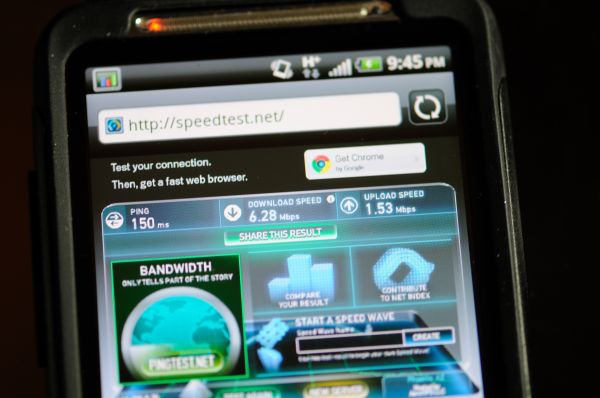
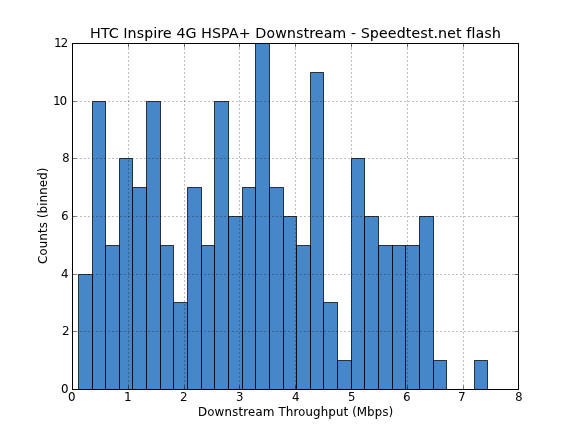
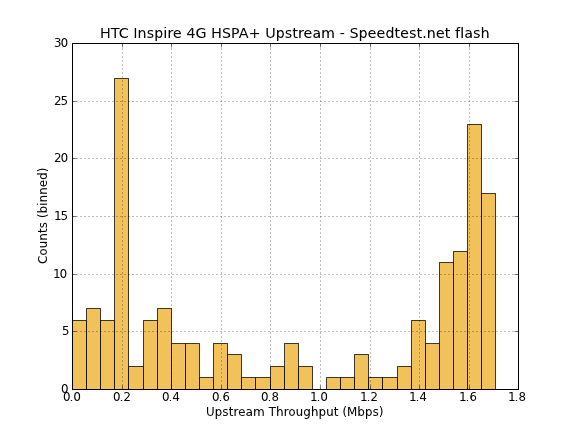
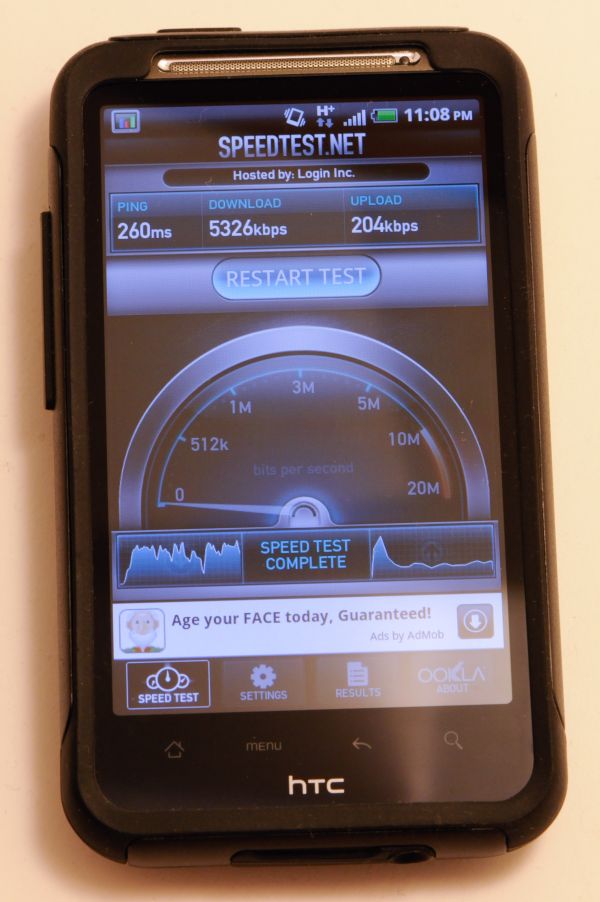

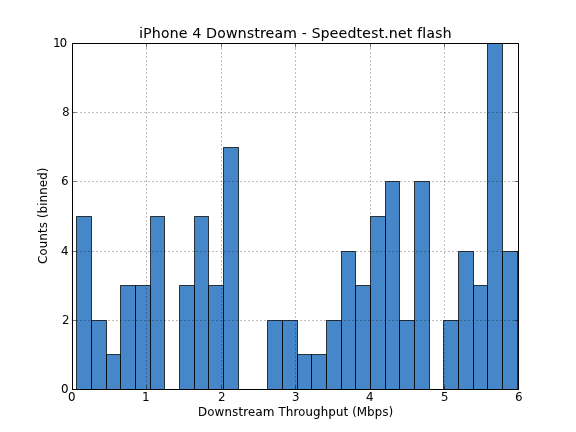
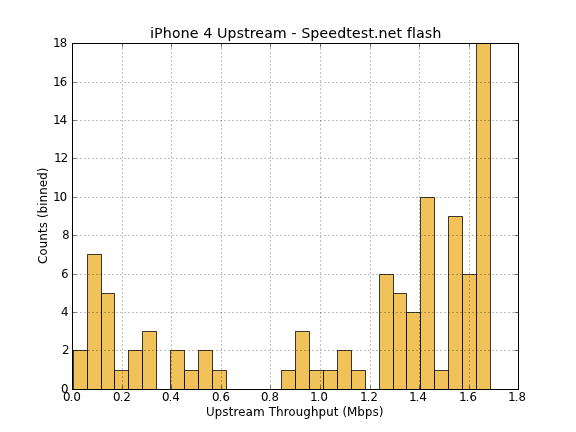








20 Comments
View All Comments
dtralex - Sunday, August 23, 2015 - link
Well, you can read more on ReviewKid as well.mcnabney - Monday, May 2, 2011 - link
Nice, but still CLEARLY 3G. The 4G BS about HSUPA and HSPA+ is just marketing lies. LTE is just BARELY 4G and it easily beats this, especially latency (ping). Sub-50ms pings will make wireless connectivity effectively the same as a fast, wired broadband connection.Death666Angel - Sunday, May 1, 2011 - link
Can't wait to read it. It's the first phone I've had pre-ordered. Awaiting the import from UK to come some time later this week (to Germany where it will launch in about 2 to 4 weeks).... :)iuqiddis - Sunday, May 1, 2011 - link
How's the battery life effected, if at all? Thanks!adam92682 - Monday, May 2, 2011 - link
System update reports that my atrix is up to date. I wasn't given the option to upgrade.hyvonen - Monday, May 2, 2011 - link
After seeing the AT&T support page showing how to update the phone first to 4.1.57 and then to 4.1.83 but being unable to do it, I spent an hour this morning on chats with AT&T and Motorola tech support folks. AT&T was useless - they had nothing to tell me, they just pointed me to an AT&T support website that showed how to do the update (with tricks like "turn off wifi, turn it on again, reboot cell phone", "take battery out" etc.). In the end they sent me to Motorola tech support chat.The moto folks had a better idea what's going on, but some of the info seemed conflicting. First they said that the new release is sent to a small select group, and that it's being tested... after the testing is over, it'll be available to everyone in 5-7 days. After a few questions, they said they started rolling out the update on April 27th, implying that it takes a while to get it to all the customers.
Their main point was: keep waiting for the "notification", and once you get that, you can update the phone.
Interestingly, the AT&T support page no longer shows the update to 4.1.83 - only to 4.1.57. Two hours ago it was still there...
So, bottom line: AT&T did NOT make the update available in April like they promised. It is STILL not available to regular folks.
adam92682 - Tuesday, May 3, 2011 - link
I just got the notification that the update is available now.name99 - Monday, May 2, 2011 - link
Brian, all these benchmarks show is essentially peak throughput.Much of the work being done in improving these standards has to do with other issues, including:
- better TOTAL throughput in a cell, so that more phones ALL see consistent high speed
- better performance at the edge of a cell
- better cell handover (ie fewer dropped calls)
I appreciate that these are not things it is easy for you to test personally, but can you at least pressure the phone manufacturer and carrier to provide information --- and shame them by pointing this out if they refuse to provide the information.
For example, even if you can't get information about how well they are implemented, you can ask the manufacturers and carriers how many independent antennas they are using in the phones or in the towers; how many rounds of turbo decoding they run; what sorts of mechanisms they use to jointly utilize
retransmitted frames (eg Chase combining vs partial incremental redundancy), so they offer soft handover, etc etc. The INTERESTING stuff that's going on is not what allows for maximum throughput, but what allows the system to continue working well under poor conditions.
Otherwise we're going to see these reviews degenerate into the same moronic megapixel stupidity we saw with digital cameras for a while, or earlier the MHz stupidity of the Pentium4 years --- an obsession with a single number that doesn't much distinguish one carrier or phone from another, while ignoring the large totality of issues that do lead to distinctions.
EnerJi - Monday, May 2, 2011 - link
+1Well said!
synaesthetic - Tuesday, May 3, 2011 - link
Well jeez, I've been seeing 2-3Mbps upstream (note this is average, NOT peak!) on my MT4G for months now... and I saw 1.5-2Mbps on my Samsung Vibrant...Really, AT&T, shame on you for tooting your horn as the "fastest" when my carrier, the one everyone loves to hate, blew your upstream speeds away ever since I've been with them!
And keep your damn dollars and your lockdown-crazy hands away from my T-Mobile!